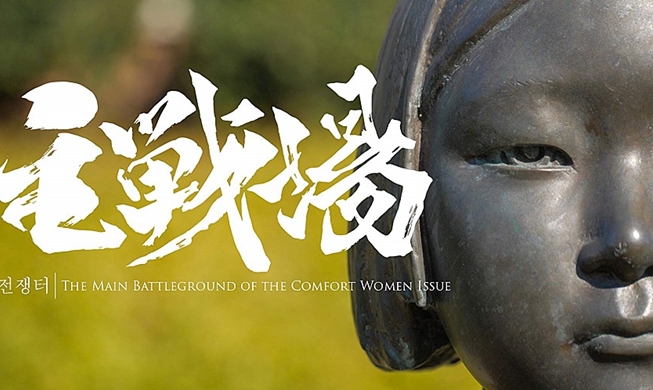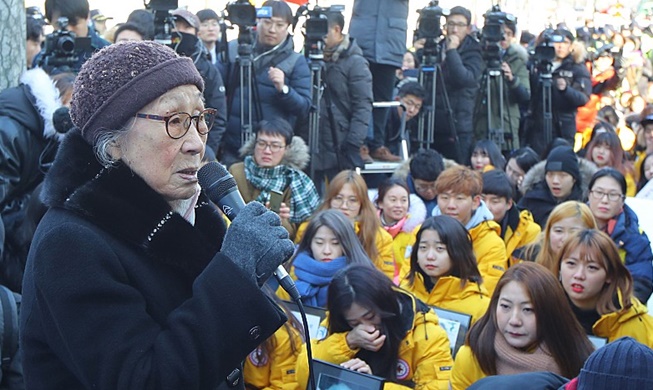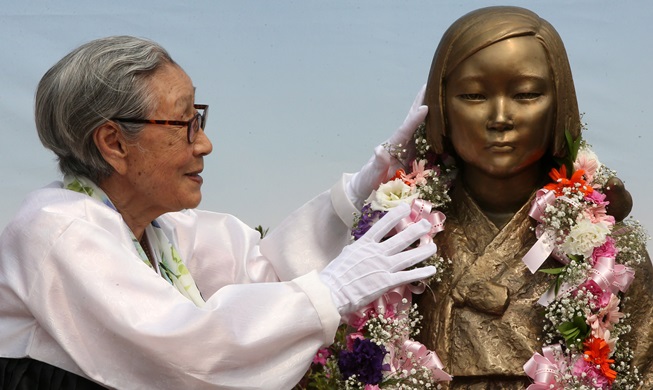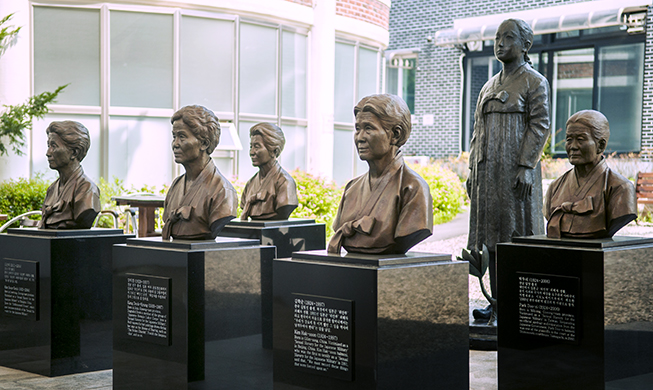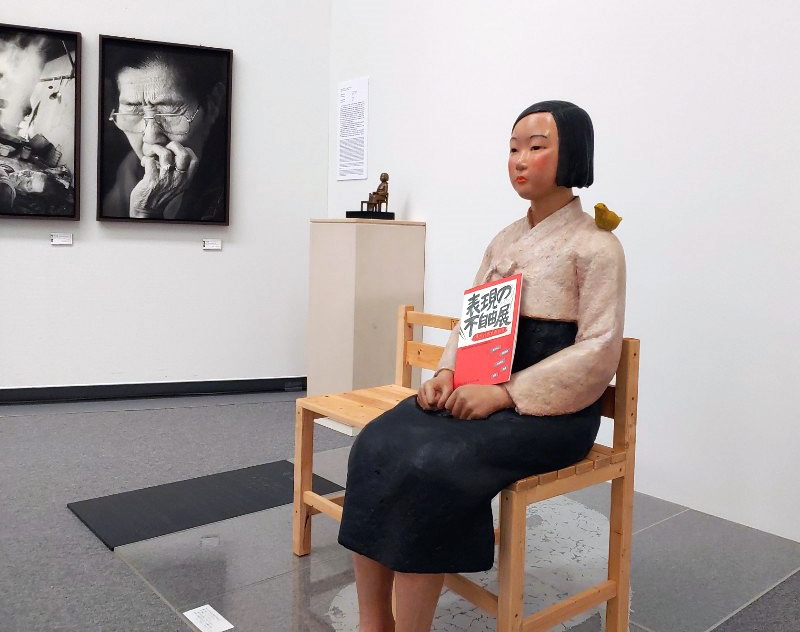
"The Statue of Peace," a Korean statue of a comfort woman submitted to the Aichi Triennale 2019 held in central Japan, holds a pamphlet for a section of the arts festival titled "What comes after the lack of freedom of expression." (Yonhap News)
By Lee Kyoung Mi and Lee Hana
An international arts festival in Aichi Prefecture of central Japan has shut down the exhibition of a Korean statue representing sex slaves during Japanese occupation of the Korean Peninsula (1910-45) and World War II just four days after the work's opening.
The Korean government as well as Japanese media outlets and artists have harshly criticized the statue's removal from the Aichi Triennale 2019 amid heightened tensions between the two countries.
"The Statue of Peace" was displayed in a section of the festival titled "What comes after the lack of freedom of expression" that opened on Aug. 1. This was the first time for the work to be displayed in its full form at a public Japanese museum.
Following the opening, however, Nagoya Mayor Takashi Kawamura publicly requested that the exhibit be shut down, and Chief Cabinet Secretary Yoshihide Suga announced that he would check with the event's organizers on if prior notice was given about the statue when it received financial assistance from the Japanese government.
A few days after the opening, the organizers in a news conference said they feared a threat to public safety at the event after receiving email and phone calls, thus they said the section would be closed due to growing safety fears.
On Aug. 5 in Seoul, Ministry of Culture, Sports and Tourism spokesperson Kim Jin-gon called the exhibit's shutdown "very unfortunate," adding that "freedom of expression in the arts should be respected no matter what, and we hope that the exhibit will be reopened to the public."
The Japanese media and art circles also criticized the shutdown.
The triennale's executive committee that organized the section "What comes after the lack of freedom of expression" in an Aug. 3 news conference called the decision "an act of historical violence," saying the incident would go down as "the worst case of censorship in Japan since World War II."
The Japanese daily Asahi Shimbun wrote, "People who came to see the exhibit likely had mixed opinions, but in any case, they would've had the chance to think about freedom of expression. Now that opportunity is lost."
"Sometimes there's censorship and criticism from the authorities, other times there's protest and intimidation. This time, freedom of expression has suffered a helpless retreat. Shouldn't an artwork that causes controversy due to its ability to make us see differences in our values be valued above all else?"
Other newspapers like The Tokyo Shimbun and The Mainichi Shimbun released a joint statement on Aug. 4 saying, "Excluding expressions that go against the administration is essentially a form of censorship. Not criticizing underhanded terrorist warnings and threats that eat away our democracy is another big problem."
In addition, some 100 civilians outside the museum were also reported to have held a demonstration demanding that freedom of expression be protected.
Japan P.E.N. Club, a group of well-known Japanese artists, also released a statement demanding that the exhibit continue. Denouncing its government's actions, the club said, "The administrator's comments on this exhibit embodies political pressure. What the organizers should do is create a space for the artist and the audience to communicate to create a bigger public forum."
km137426@korea.kr
